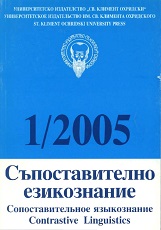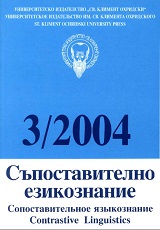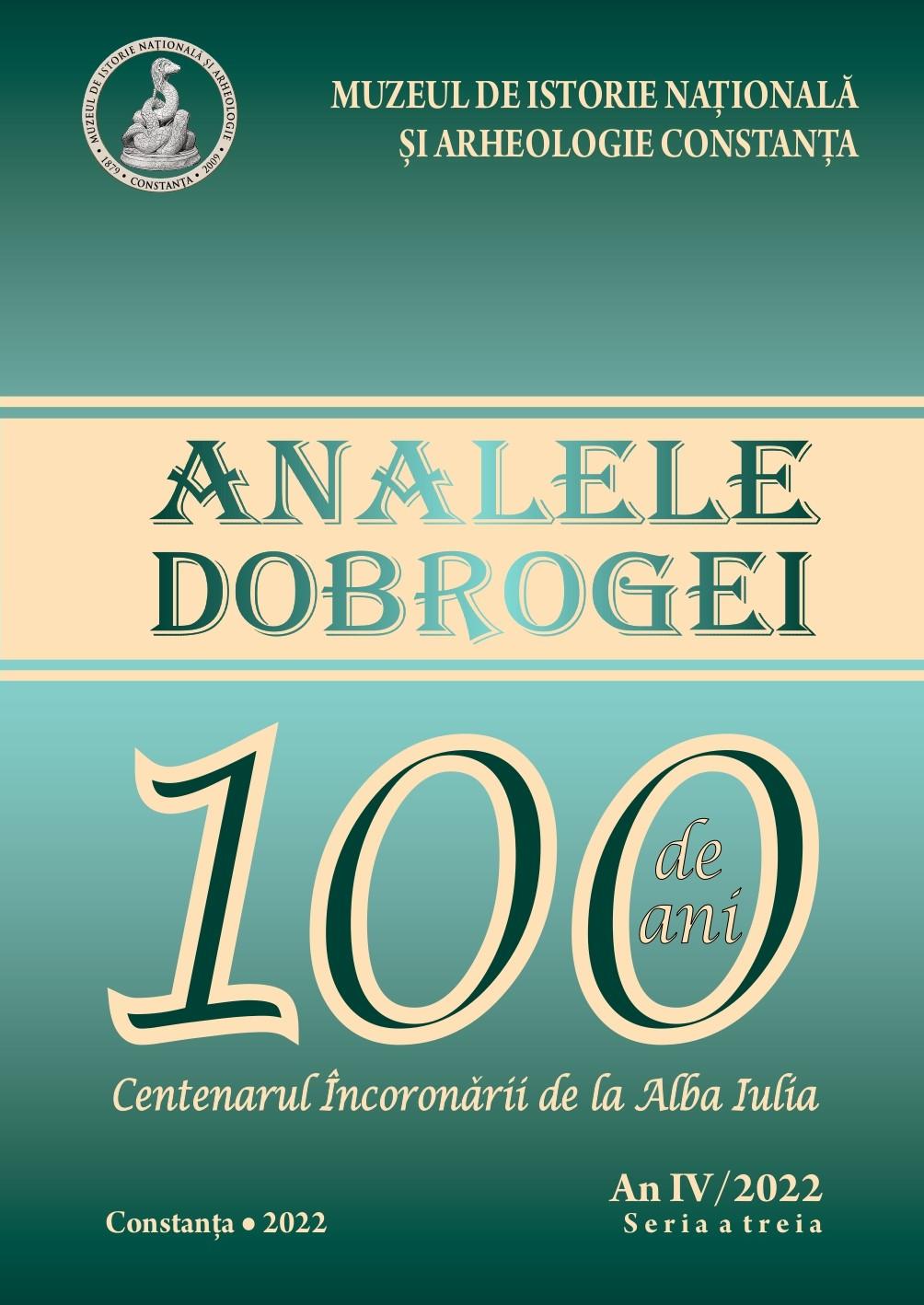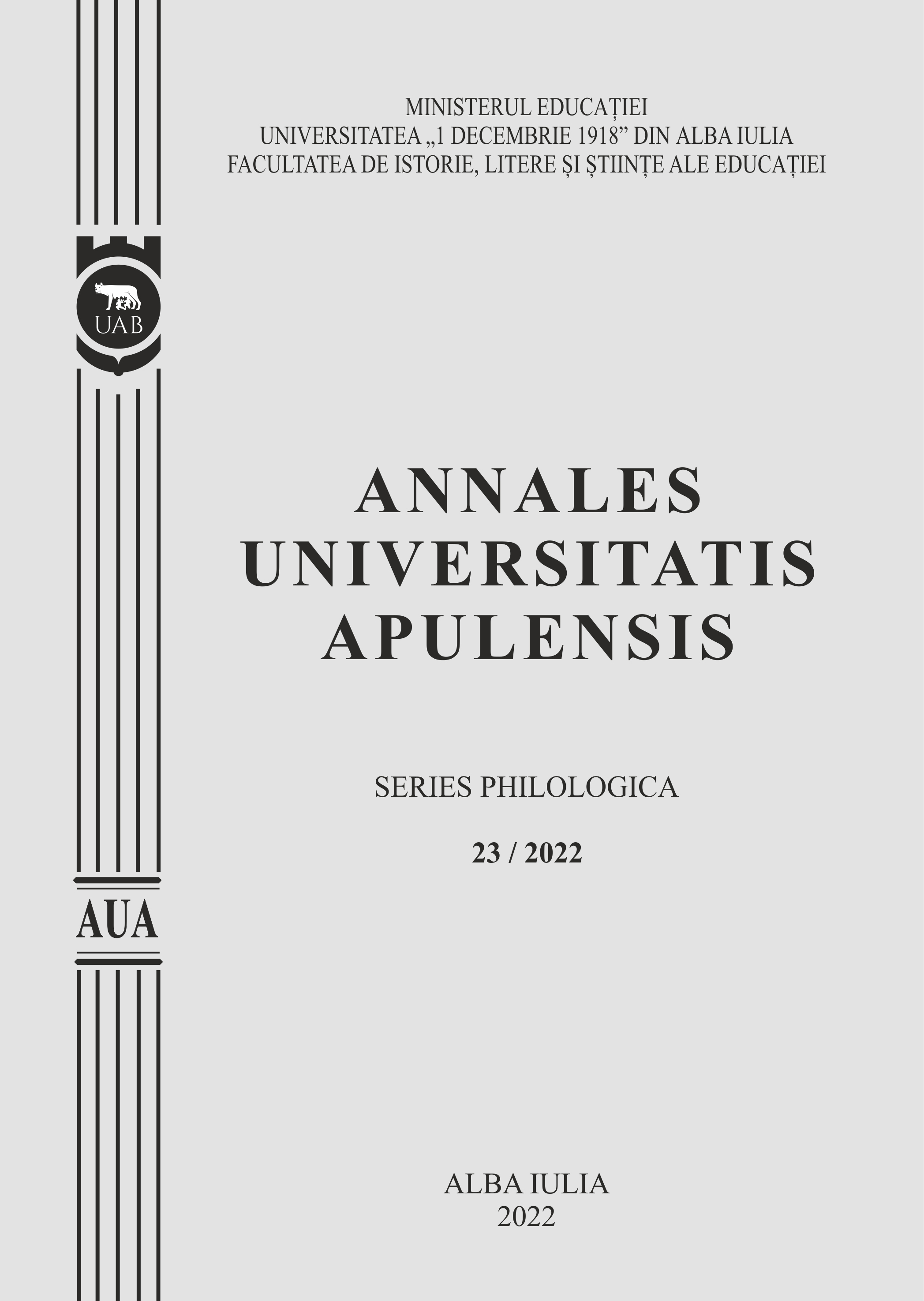
М. Košková a koi. Bulharsko-slovensky slovnik. I. (A-К).
Review of: М. Košková a koi. Bulharsko-slovensky slovnik. I. (A-К). Bratislava, Slavistický kabinet SAV, 2004. 709 р.
More...We kindly inform you that, as long as the subject affiliation of our 300.000+ articles is in progress, you might get unsufficient or no results on your third level or second level search. In this case, please broaden your search criteria.

Review of: М. Košková a koi. Bulharsko-slovensky slovnik. I. (A-К). Bratislava, Slavistický kabinet SAV, 2004. 709 р.
More...
Review of: V. V. Usacheva. Славянская ихтионимическая терминология. Принципы и способы номинации. Обратный словарь. Москва, Индрик, 2003. 352 с.
More...
Review of: W. Fiedler. Das Albanische Verbalsystem in der Sprache des Gjon Buzuku (1555). Prishtinë, Akademia e Shkencave dhe e Arteve e Kosovës, “Grafoprint”, 2004. 812 р. ISBN 9951-413-15-3
More...

The present study investigates particular types of legal qualifications, their textual patterns and structuring in legislative documents across two different legal systems - the codified Roman-law based legal system in Bulgaria and the common law and precedent based system in England. The hypothesis to be tested is that differences are reflected in the language used to conceptualize statutory provisions. The main aspects of the textual component of English and Bulgarian statutory texts, namely the (linguistic) structure and place of certain types of legal qualifications and their relatedness to preceding or following discourse will also be examined.
More...

Review of: D. Herberg, M. Kinne, D. Steffens. Neuer Wortschatz. Neologismen der 90er Jahre im Deutschen (unter der Mitarbeit von Elke Tellenbach und Doris al-Wadi) [Schriften des Instituts fur Deutsche Sprache, Band 11]. Berlin I New York, De Gruyter, 2004. 394 р.
More...
Review of: С. Влахов. Нов руско-български речник (под ред. на А. Липовска). София, Парадигма, 2004. 904 p.
More...
Review of: V. Radeva (Hg.). Bulgarische Grammatik. Morphologisch-syntaktische Grundzüge. Hamburg, Helmut Buske Verlag, 2003. 360 p.
More...
Review of: М. Вълчанова. Глаголите reflexiva tantum в словашки език и техните съответствия в български. Благоевград, 2002. 239 p.
More...
Review of: Цв. Аврамова. Словообразувателни тенденции при съществителните имена в българския и чешкия език в края на XXвек. София, Heron press, 2003. 259 p.
More...
Review of: P. Kosek. Spojovací prostředky v češtině období baroka. Spisy filozofické fakulty Ostravské univerzity 147. Ostrava, 2003. 180 p.
More...
The paper treats the penetration of the N. Marr’s so-called New Language Doctrine in Bulgaria, and the influence it had exercised on the Bulgarian linguistics. On the basis of published facts and archival documents the impact in our country of the Y. Stallin’s statements on the language in 1950 is revealed. The relations the ideology and linguistics had been entering upon, and the stages in the laying down the Marxism as a fundamental scientific ideology frame are presented. It has been determined that the ideology and the politics had become a considerable factor for the development of the scholarly life, and this had led to decisive changes in Bulgarian linguistics during the 50™ years of XX c.
More...

Review of:M. Дренска. Българско-португалски речник / Dicionario bulgaro-portugues. София, ИК „Светулка 44“, 2003, 823 p.
More...
Review of:Славянская этнолингвистика: Библиография. [Российская академия наук, Институт славяноведения, Отдел этнолингвистики и фольклора.] Москва, 2003. 120 p.
More...
Review of: Slavica v české řeči I. České překlady ze slovanských jazyků do roku 1860. Sestavil Josef Bečka s kolektivem. II. dolpněné vydání připravili Jiří Bečka a Karolína Skwarska. Slovanský ústav, Euroslavica, Praha, 2002. 168 s. Slavica v české řeči II. České překlady ze slovanských jazyků 1861-1890. Jiří Bečka a kol. Slovanský ústav, Euroslavica, Praha, 2002. 632 s.
More...
After the Russo-Ottoman War of 1877-1878 when Dobrudja became part of the Romanian state, Turkish language education continued to function in the traditional way remaining from the Ottoman period. Attempts to regulate the education of minorities existed in the interwar period when officials from the Kingdom of Romania adopted a series of measures in this regard. At the same time, there were initiatives from minorities, in the case of the Muslim community a sensitive aspect being that of the subjects that should be studied in schools. The first unified curriculum of Turkish primary schools in Dobrudja was prepared at the initiative of the "Association of Graduates of the Muslim Seminary in Dobrudja" and published in 1937 at the printing house of the "Emel" magazine. This article aims to analyze the content of the curriculum. Thus, an important contribution is made in terms of the code of conduct and the themes studied in the Turkish schools until the establishment of the communist regime. Given that the curriculum was published in Ottoman Turkish in 1937, long after the introduction of Kemalist reforms, that it proposes the use of the Ottoman alphabet, and that most of the program focuses on the study of religion, the paper tries to show whether it was an expression of opposition against the kemalist reforms or an attempt to improve the quality of education in Turkish schools in Dobrudja. To achieve this objective, beyond the analysis of the content of the program, the foundations of those who drafted it is also explained.
More...
My research aims to investigate the Turkish and Tatar language education in Romania from two perspectives: the reconstruction of the dominant educational paradigm and the outline of a history of Turkish and Tatar language education. At a first level, I reconstruct the educational paradigm which is dominant among the Turkish and Tatar elites by placing education in the general ethno-political program of minority elites, by identifying relevant policy actors concerning minority education and the main debates on this issue. At a second (history outline) level, I identify the major historical turning points of the Turkish and Tatar language education, by sketching a periodization of educational and institutional processes. Emphasizing the current institutional reality of Turkish and Tatar language education, the research will give a glimpse on how two minorities in Romania, with a similar historical and cultural background, are engaging in different forms of minority-language education. The research is based on qualitative methods: structured and semi-structured interviews with political actors, experts in education, members of the two minorities, on text analysis of political programs, journalistic texts and not last on the analysis of legislation.
More...
This paper is a study of terms that concern lexical fields approaching money in Ciocoii vechi și noi novel by Nicolae Filimon, a well-known Romanian novel from the 19th century. The main inquiry from this research was how money is conceptualized within the context of our approach of the novel according to the meaning of money identified in this novel. In order to find an answer, we conducted an analysis of money related terms. The data consists of all identified terms referring to money as the main field of interest. 17 terms referring to money have been identified. A lexical, morphological and semantic analysis of the terms was performed and the terms were grouped into two main etymological branches - 5 Romanian terms, and foreign branches - 12 terms from Turkish, Greek and German, and then classified according to the frequency of use. The most important and frequently used foreign currency, besides Romanian currency, are Turkey, Greece, and Germany, as identified and mentioned in the novel. This predominance reflects the money movement outlined by the characters description of setting or commerce products, and this is owing to the circulation of money and the international trade or abroad commerce, owing to political and cultural Phanariot influences in Wallachia, during the first decades of the 19th century. The present paper could be useful as a theoretical background of the relationship between language and culture in the context of Romanian literature from the 19th century, the researched lexemes mentioned here may be considered as approaches of linguistic analysis.
More...